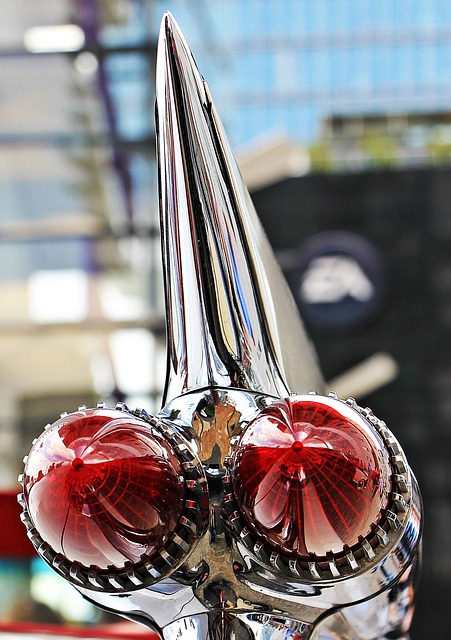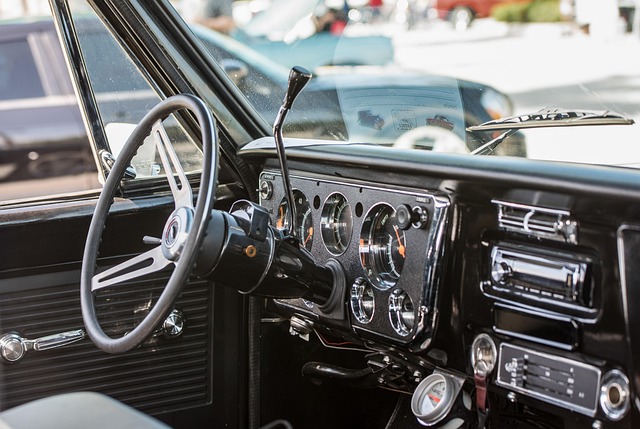Looking to register your car in California? This guide walks you through the entire process, from understanding key requirements to receiving your registration plate. We’ll highlight crucial steps like gathering essential documents and completing a DMV VIN verification, ensuring a smooth experience. By following these straightforward instructions, you’ll be on the road in no time while adhering to California’s stringent car registration regulations.
- Understand California Car Registration Requirements
- Gather Necessary Documents for DMV Visit
- Perform Vehicle Identification Number (VIN) Verification
- Complete Application and Pay Fees at DMV
- Receive Your Registration Plate and Documents
Understand California Car Registration Requirements

Before registering your car in California, it’s crucial to understand the state’s specific requirements for vehicle registration. This process involves more than just filling out forms; it includes verifying key information about your car through a process known as DMV VIN verification. This step ensures that all vehicles on California roads meet safety and emission standards.
The California Department of Motor Vehicles (DMV) requires you to complete a detailed inspection, which often entails a mobile VIN inspection or vin inspection service. This involves checking the Vehicle Identification Number (VIN) for any discrepancies or signs of tampering. A valid and accurate VIN is essential as it links your vehicle to its history, including ownership records, maintenance logs, and any reported accidents. By undergoing this process, you not only ensure compliance with California laws but also contribute to maintaining a transparent and safe automotive environment.
Gather Necessary Documents for DMV Visit

Before visiting the DMV, ensure you have all the required documents to make the registration process smooth and efficient. The primary piece of documentation is the Vehicle Identification Number (VIN) verification, which can be done through a valid VIN inspection or mobile vin verification service. This step is crucial as it ensures the vehicle’s authenticity and history.
Along with the VIN details, prepare other essential documents such as proof of ownership (if applicable), registration papers from the previous state (if transferring), current insurance policy, and a valid driver’s license. It’s always beneficial to double-check the DMV’s website for any specific requirements or updates related to registration, especially regarding mobile vin inspection processes.
Perform Vehicle Identification Number (VIN) Verification

Before registering your car in California, it’s crucial to perform a Vehicle Identification Number (VIN) verification. This step is essential as it ensures that the vehicle you’re planning to register is genuine and hasn’t been reported stolen or had its identity altered. The process is straightforward; you can either visit a DMV office for a static VIN inspection or opt for a convenient mobile vin inspection service.
A mobile vin inspection offers flexibility, allowing you to get the verification done at your preferred location. This method is particularly useful if you have a busy schedule or prefer not to visit a DMV branch. During the vin inspection, a professional will use specialized tools to cross-reference the VIN with national databases, providing instant results that guarantee the vehicle’s history and authenticity.
Complete Application and Pay Fees at DMV

After gathering all necessary documents, it’s time to complete your car registration process at the DMV (Department of Motor Vehicles). Fill out the Application for Registration and Title (Form DV306) in its entirety. This form requires detailed information about you, the vehicle, and its history. Make sure to accurately enter your personal details and the car’s specifications, including its make, model, year, and unique Vehicle Identification Number (VIN). The VIN is a critical component of the registration process, especially for accurate dmv vin verification.
Along with completing the application, you’ll need to pay the required fees. These fees vary based on your vehicle type and other factors, so check the DMV’s website or consult a representative for the current rates. Once all documents are in order and fees are paid, you can expect to receive your registered vehicle title and license plates. Don’t forget that proper vin inspection is part of this process, ensuring the VIN data is accurate and matches the vehicle’s characteristics. Consider utilizing a mobile vin verification service for convenience, as many offer efficient and reliable vin verifier solutions right from your smartphone.
Receive Your Registration Plate and Documents

After submitting your application, it’s time to receive your car’s registration plate and important documents from the DMV (Department of Motor Vehicles). This process is a crucial step in legally owning and operating your vehicle in California. Once approved, you’ll be equipped with a registration certificate, which confirms your ownership, and a unique California license plate that identifies your vehicle.
The DMV will also provide a Vehicle Identification Number (VIN) verification, ensuring the accuracy of the data on your car’s registration. This is where a mobile VIN inspection or a vin inspection service can come in handy, allowing you to verify your vehicle’s history and specifications conveniently before final pickup.
Registering a car in California involves understanding specific requirements, gathering essential documents, and completing a straightforward process at the Department of Motor Vehicles (DMV). After performing a DMV VIN verification, you can fill out the application, pay the associated fees, and receive your registration plate and necessary documents. This ensures your vehicle is legally registered and ready to hit the roads in the Golden State.
